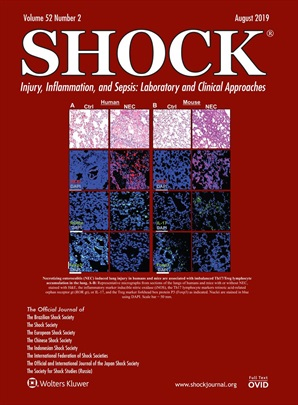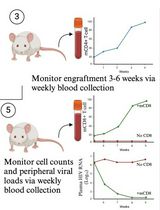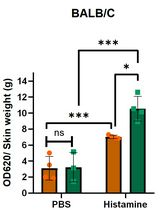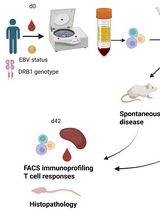- EN - English
- CN - 中文
Isolation and Quantification of Extracellular DNA from Biofluids
生物流体中细胞外DNA的分离和定量
发布: 2020年08月20日第10卷第16期 DOI: 10.21769/BioProtoc.3726 浏览次数: 4859
评审: Farah HaqueAnonymous reviewer(s)
Abstract
Extracellular DNA is studied as a diagnostic biomarker, but also as a factor involved in the pathophysiology of several diseases due to its pro-inflammatory properties. Extracellular DNA can be extracted from plasma, urine, saliva or other biofluids using standard DNA isolation procedures and specialized commercial kits. Sample preparation for isolation is important, freezing and thawing may affect the amount of extracellular DNA extracted. Subsequent centrifugations remove cells and cell debris from the samples to obtain true extracellular DNA. Small volume of samples especially from animal experiments is often an issue and it affects the DNA yield. Very short fragments (˂ 100 bp) can be lost during isolation and are difficult to quantify using PCR. Fluorometric methods asses all stained DNA fragments. Selecting the method for quantification of extracellular DNA is crucial and combination of at least two methods is ideal. Standardization of procedures or at least their reporting in research papers is of utmost importance for comparison of results.
Keywords: Cell-free DNA (游离DNA)Background
Extracellular DNA often called cell-free DNA is a term for all DNA found outside of cells especially in diagnostic biofluids. Blood plasma DNA was first discovered by Mandel and Metais (1948). The interest in extracellular DNA research was stimulated much later by the research of the so-called liquid biopsy as a source of DNA-based biomarkers for non-invasive screening and diagnostics (Poon and Lo, 2001). The same extracellular DNA is, however, also involved in the pathophysiology of inflammatory diseases such as sepsis (Lauková et al., 2017), acute kidney injury (Jansen et al., 2017) and acute liver failure (Vokálová et al., 2017). The proinflammatory properties of extracellular DNA are in some of the sequences, especially mitochondrial DNA, resembling the sequences of bacterial DNA such as unmethylated CpG islands. In this case those proinflammatory properties are facilitated via detection with toll-like receptors. The nuclear DNA is more effective to trigger inflammation when associated with proteins such as histones or as a part of neutrophil extracellular traps. Extracellular DNA can be released from dying cells during apoptosis or necrosis. Most of the extracellular DNA in healthy individuals originates from blood elements.
The quantitative assessment of extracellular DNA is, thus, crucial for a wide range of research topics. There are many limitations when it comes to extracellular DNA measurement. In animal experiments, the available volume of blood, urine or saliva greatly limits subsequent analyses. Studies differ in the procedures used for sample collection, processing, isolation and quantification. This makes it impossible to use standard normal ranges for the concentration of extracellular DNA in plasma, urine or saliva. Generally, EDTA-containing tubes that inhibit the activity of deoxyribonucleases are mostly used for isolation of extracellular DNA from blood plasma (Lee et al., 2001). Sampling of urine or saliva is not standardized at all. Sample storage by freezing is common and often cannot be avoided. However, freezing and thawing can lead to unwanted degradation of extracellular DNA (Lahiri and Schnabel, 1993). Our unpublished observations suggest that isolation of DNA from fresh and frozen plasma leads to a completely divergent size profile of the extracellular DNA. Usually, two consecutive centrifugations are carried out to remove cells and smaller cellular debris from body fluids before DNA isolation. However, not all studies follow this procedure (Sun et al., 2018). Results from studies using different isolation and quantification methods cannot be compared. Due to high technical variability of the measurement of extracellular DNA concentrations the use of duplicates or triplicates could help achieve reproducible results. The standardisation of protocols for processing of body fluids intended for extracellular DNA isolation would be valuable for the research of extracellular DNA as a biomarker, but also as a damage-associated molecular pattern.
Materials and Reagents
- Tubes for sample collection
- Blood
Small volume: K3 EDTA microvettes (Sarstedt, catalog number: NC9990563 )
Large volume: EDTA monovette (Sarstedt, catalog number: NC9453456 ) - Urine or saliva
Small volume: Eppendorf tubes (1.5 ml) (Eppendorf, catalog number: 0 22363204 )
Large volume: Falcon tubes (15 ml) (Fisher Scientific, catalog number: 14-959-53A )
- Blood
- 96-well PCR plates (Thermo Fisher Scientific, catalog number: N8010560 )
- Adhesive PCR plate foils for 96-well PCR plates (Bio-Rad, catalog number: 1814030 )
- Thin-walled Qubit assay tubes (0.5 ml) (Thermo Fisher Scientific, catalog number: Q32856 ) OR Black/white flat-bottom 96-well plates (Sigma-Aldrich, catalog number: CLS3925/CLS3922 )
- Primers (stored in the freezer at -20 °C)
a.Human nuclear DNA (F: 5'-gcttctgacacaactgtgttc-3', R: 5'-caccaacttcatccacgttca-3')
b.Human mitochondrial DNA (F: 5'-cataaaaacccaatccacatca-3', R: 5'-gaggggtggctttggagt-3') - 96% Ethanol (Fisher Scientific, catalog number: BP8202500 )
- Millipore water
- Qubit dsDNA HS assay kit (Thermo Fisher Scientific, catalog number: Q32854 ) (stored in fridge at 4 °C, used at room temperature)
- QIAmp DNA Blood mini kit (Qiagen, catalog number: 51104 ) (stored at room temperature, protease after reconstitution stored in the fridge at 4 °C)
- Sso Advanced Universal SYBR Green Supermix (Bio-Rad Laboratories, catalog number: 1725270 ) (stored in the freezer at -20 °C)
- Agarose molecular grade (Sigma-Aldrich, catalog number: 0 5077 )
- TAE buffer (50x) (Thermo Fisher Scientific, catalog number: B49 )
- Loading dye (stored in fridge at 4 °C) (Thermo Fisher Scientific, catalog number: R0611 )
- GoodView Nucleic Acid Stain (SBS Genetech, catalog number: HGV-2 ) (stored in fridge at 4 °C)
Equipment
- Centrifuge with rotor suitable for falcon tubes and rotor for Eppendorf tubes
- Real-time PCR cycler (QuantStudioTM 3 Real-Time PCR System, 96-well, Thermo Fisher Scientific)
- Qubit 3.0 fluorometer OR DeNovix QFX fluorometer OR fluorescence plate reader (Synergy H1, BioTek)
- Vortex Genie 2 (Scientific Industries)
- Multichannel Eppendorf pipette (8-channel, 30-300 µl) (Eppendorf)
- Electrophoresis
- UV Transilluminator (UVP)
Software
- Office excel (Microsoft) or any equivalent
- Real-time PCR analysis software
- Gen5 (Synergy H1 reader software; BioTek; available here)
Procedure
文章信息
版权信息
© 2020 The Authors; exclusive licensee Bio-protocol LLC.
如何引用
Janovičová, �., Konečná, B., Vlková, B. and Celec, P. (2020). Isolation and Quantification of Extracellular DNA from Biofluids. Bio-protocol 10(16): e3726. DOI: 10.21769/BioProtoc.3726.
分类
分子生物学 > DNA > DNA 定量
免疫学 > 动物模型 > 小鼠
您对这篇实验方法有问题吗?
在此处发布您的问题,我们将邀请本文作者来回答。同时,我们会将您的问题发布到Bio-protocol Exchange,以便寻求社区成员的帮助。
Share
Bluesky
X
Copy link















